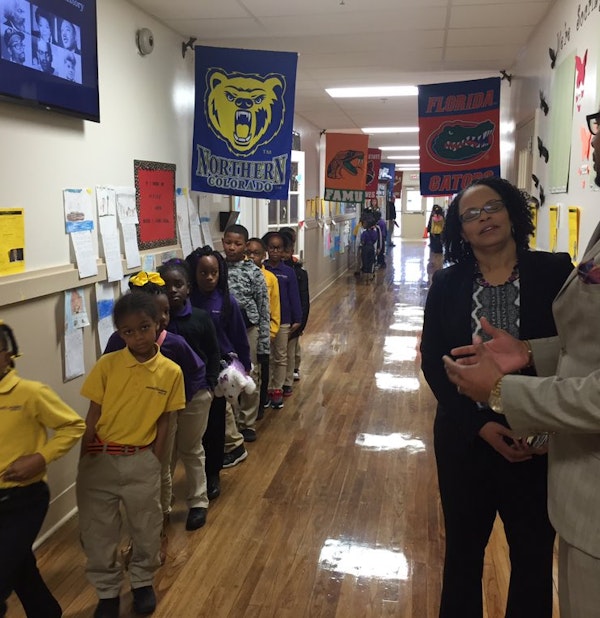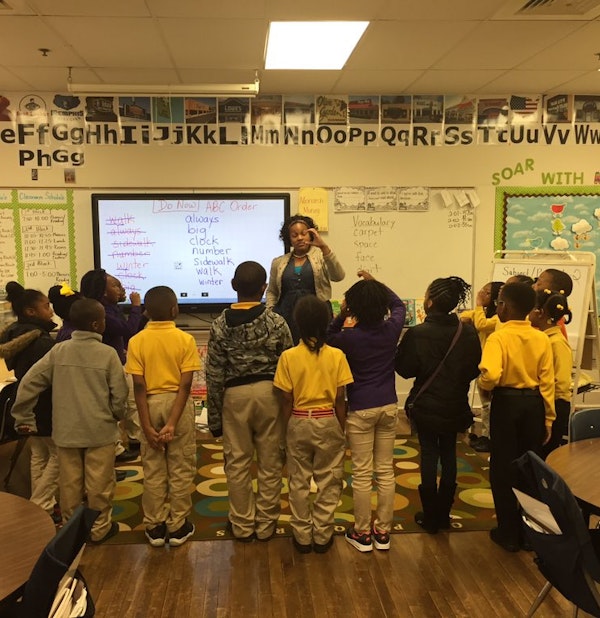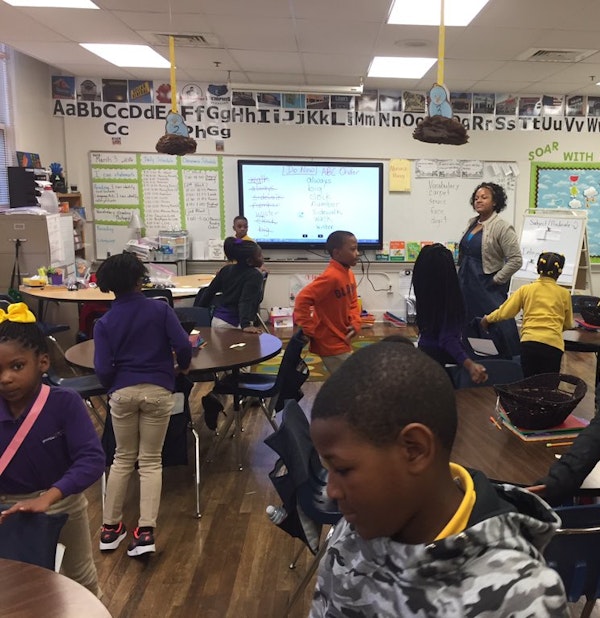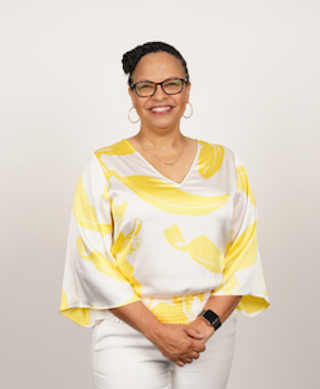“Attagirls” Help, but Engaged Learning Helps More
Students want more than “attagirls” and “attaboys.” They want teachers to challenge them with their classroom instruction. Unfortunately, that doesn’t often happen.
 Students and staff at Promise Academy in Tennessee's Achievement School District. (Malika Anderson/Twitter)
Students and staff at Promise Academy in Tennessee's Achievement School District. (Malika Anderson/Twitter)
Ten years ago, I was the superintendent of Tennessee’s Achievement School District, which aims to improve student learning in the state’s 5% lowest academically performing schools. At the time, I believed that if we removed some constraints our schools were facing from their central offices, educators in those schools would have the flexibility to make instructional, structural, and content decisions that better met the needs of students in their classrooms. I thought that school autonomy was the silver bullet for school improvement.
I was wrong — kind of.
We gave schools more autonomy, but that alone didn’t improve student outcomes. Our singular focus on governance failed to account for the support educators needed to translate autonomy into effective instruction.
The experience was humbling. I learned that a shift in governance doesn’t guarantee a shift in focus. It changed the way I think about what it takes for districts and charter management organizations to implement meaningful change.
Student learning is education’s real purpose
Systems of governance, those who lead them, and the context in which they operate are essential to improving student learning. However, it’s all too easy to find ourselves more preoccupied with the power of these systems than their purpose. It’s all too easy to focus on those who hold “the power” rather than what they’re doing with that power. And it’s all too easy to forget that education’s purpose is to empower students through learning, not adults through bureaucracy.
We know how to improve student learning. It’s all about fundamentals; there are no silver bullets or shortcuts. Dr. Richard Elmore names three elements that contribute to learning: what is taught (the content), how it’s taught (teachers’ knowledge and approach), and how students engage (the ways students interact with the content, the teacher, and peers).
To quote Dr. Elmore and colleagues, “that’s it” — that’s it regardless of governance structure, regardless of geography, regardless of district size, even regardless of funding.
No matter the context, if we want to improve student learning, we need to ensure that decisions are centered on the three components of Elmore’s instructional core — particularly student engagement.
We know how to improve student learning. It’s all about fundamentals; there are no silver bullets or shortcuts.
Content and pedagogy are critical, and each needs additional support; however, each already has momentum. We’ve seen school improvement work center increasingly on high-quality instructional materials. Professional learning and educator prep programs have long recognized that instructional practices can be optimized to benefit students’ learning. This work should continue.
 Teacher instructs students at Promise Academy in Memphis, TN. (Malika Anderson/Twitter)
Teacher instructs students at Promise Academy in Memphis, TN. (Malika Anderson/Twitter)
Students want educators to challenge them
Student engagement has seen the least movement, perhaps because it’s the least understood. On a recent school visit, one student shared something that illuminates the confusion: “Mr. Smith (a pseudonym) does his ‘door work’ — says good morning, smiles, and gives fist bumps to each of us when we walk into class — and as soon as he shuts the door and starts the lesson, he flips a switch and acts like he doesn’t know us. Like he has to play the role of teacher and we have to be the obedient students. It’s weird.”
Students want authentic engagement beyond upbeat greetings at the classroom door; they want to be engaged in everyday instruction. But it rarely happens.
Uplifting interactions between teachers and students in hallways, advisory groups, and special events are fabulous ways to boost school culture. But — in and of themselves — they do not strengthen students’ ability to substantively engage with academic content.
I invite you to reflect on your own meaningful school experiences. When I reflect on mine, I remember that the teachers who made the biggest difference in my education and life, weren’t the ones who just uplifted me. They were the ones who challenged me academically — the ones who invited me to go deeper and farther, to figure out what I thought and communicate it, to apply my own problem-solving methods. That’s what affirming relationships do.
Students want authentic engagement beyond upbeat greetings at the classroom door; they want to be engaged in everyday instruction. But it rarely happens.
In her book, Cultivating Genius: An Equity Framework for Culturally and Historically Responsive Literacy, Dr. Gholdy Muhammad defines affirming relationships as relationships in which each party recognizes and cultivates the unique value the other brings. To borrow a phrase from improv, if uplifting interactions are saying “yes” to students, affirming relationships are saying “yes, and….”
The “and” builds students’ agency. That is the key to engagement with content because it positions students as active contributors to and shapers of their own learning, rather than passive recipients of knowledge.
For example, a teacher could design a unit of instruction around recall of a text about how the water cycle works, or a teacher could design a unit of instruction that positions such a text as a source students use to obtain information in order to figure out what happened to a puddle on the sidewalk that they observed had disappeared.
Each scenario asks students to learn the same content. But, by allowing them opportunities to leverage their own experience and curiosity to drive learning, the latter affirms students.
Unfortunately, most classrooms default to the former.
We’ve been brought up to think of affirmations as accolades of “good job, I knew you could do it!” That’s how we have gotten used to communicating our confidence in students.
In addition to instructional “attagirls,” we should affirm students by trusting and expecting them to bear the majority of the cognitive lift in their learning.
Praising and encouraging students undoubtedly builds overall social-emotional well-being, which is a necessary prerequisite for engagement in academic content. But these methods alone don’t provide adequate opportunities for students to contribute to their own learning.
In addition to instructional “attagirls,” we should affirm students by trusting and expecting them to bear the majority of the cognitive lift in their learning. That’s true even when it’s not easy for them and even when it requires adults to step back and cede some instructional control to student exploration.
Learning to cultivate affirming relationships with students through core content instruction will be new — and uncomfortable — for many of us. There are many habits to break and systems to redesign. However, supporting instructional leaders in promoting content-embedded affirming student engagement is essential.
 Teacher and students interact in Tennessee Achievement School District classroom. (Malika Anderson/Twitter)
Teacher and students interact in Tennessee Achievement School District classroom. (Malika Anderson/Twitter)
Focus on what works in the classroom
In the coming year, as we continue to grapple with the effects of the COVID-19 pandemic and the impending ESSER cliff, I suspect that we’ll be told that many things are “essential” in education. Dedicated educators, parents, and community members will propose innumerable solutions that all purport to accelerate learning and have outsized gains on student outcomes.
We should not fall into the silver-bullet trap I did 10 years ago. We should not be distracted by trending debates or catchy headlines. Instead, we should be laser-focused on what we know makes a difference for real students in real classrooms.
For any school or district intervention, in any context across the country, we must be crystal clear about how it will bolster the instructional core — whether it’s building leaders’ capacity to model affirmation for their teachers or adopting a curriculum that makes space for student voice and choice. Every decision should serve education’s purpose: empowering students with the knowledge, skills, and confidence they need to be thoughtful, productive, engaged citizens.
We should not be distracted by trending debates or catchy headlines. Instead, we should be laser-focused on what we know makes a difference for real students in real classrooms.
Yes. And….
We should remember that it is also our purpose to foster students’ compassion, respect, and sense of responsibility — to show our students that exercising one’s own power need not and should not come at the expense of someone else’s ability to exercise theirs.
As a country, I can think of nothing more effective we could do toward those purposes than redesigning our education systems and classrooms to prioritize affirming relationships. Students then can have opportunities to engage authentically with the content they’re asked to master. They then can witness teachers live into their own expertise in a way that invites others’ thoughts and perspectives into the room. And they then can begin a life-long practice of “yes, and-ing” each other.
The Catalyst believes that ideas matter. We aim to stimulate debate on the most important issues of the day, featuring a range of arguments that are constructive, high-minded, and share our core values of freedom, opportunity, accountability, and compassion. To that end, we seek out ideas that may challenge us, and the authors’ views presented here are their own; The Catalyst does not endorse any particular policy, politician, or party.

